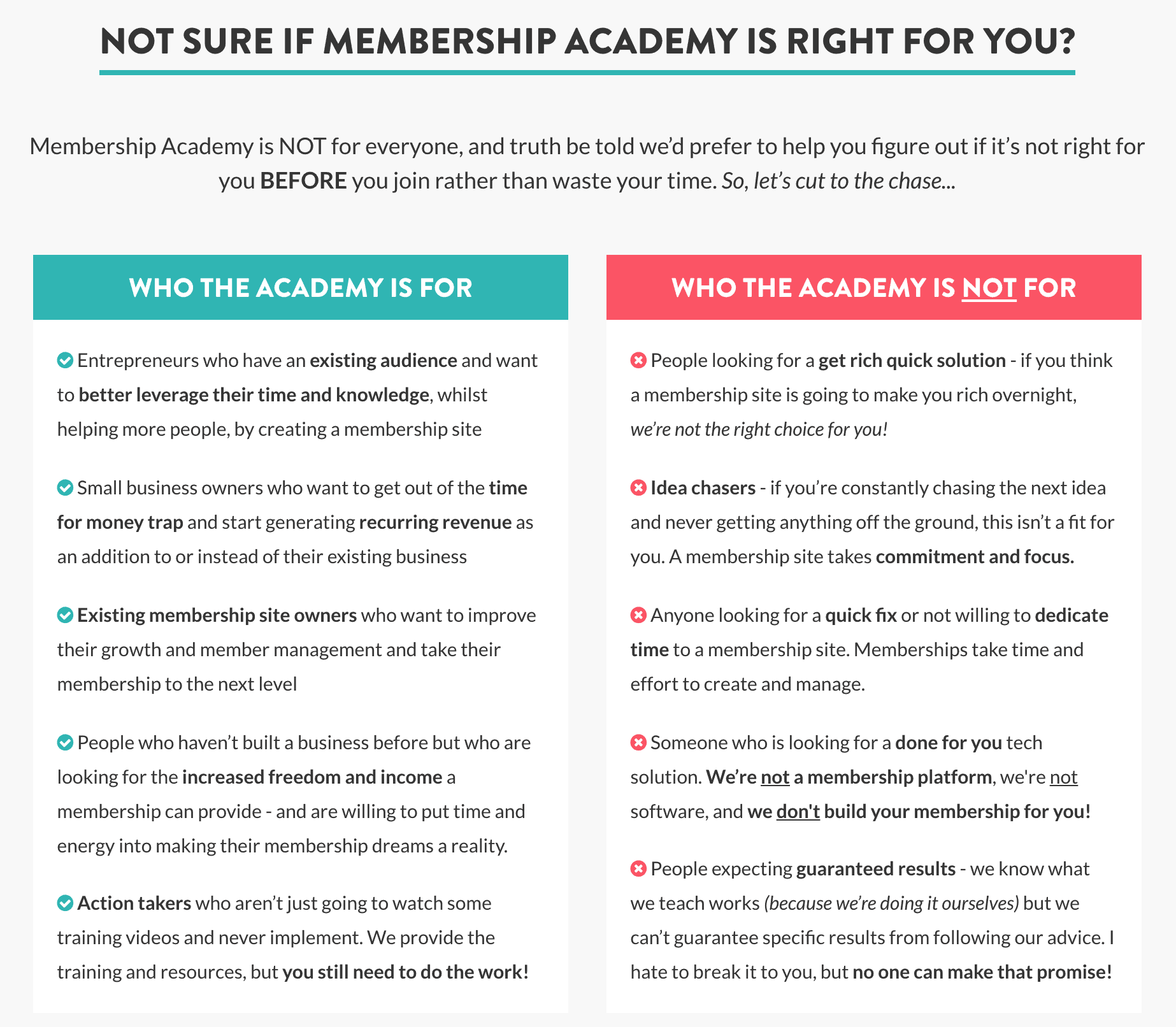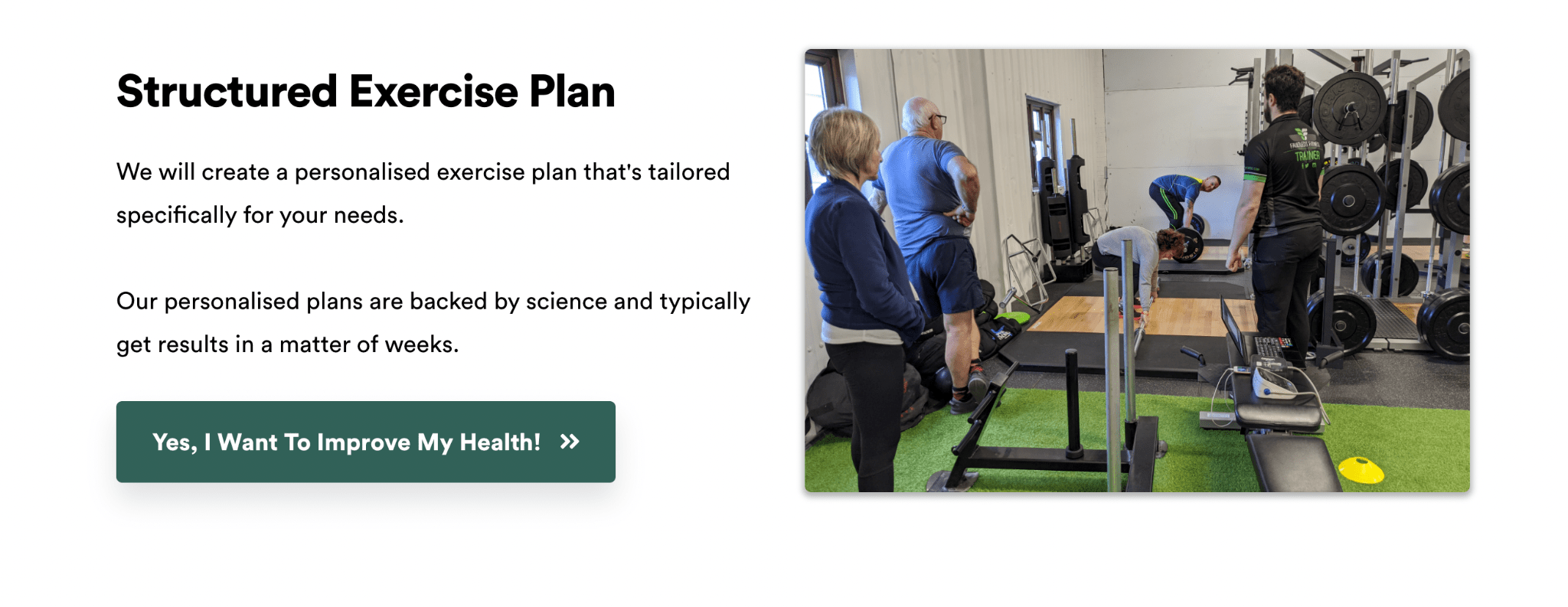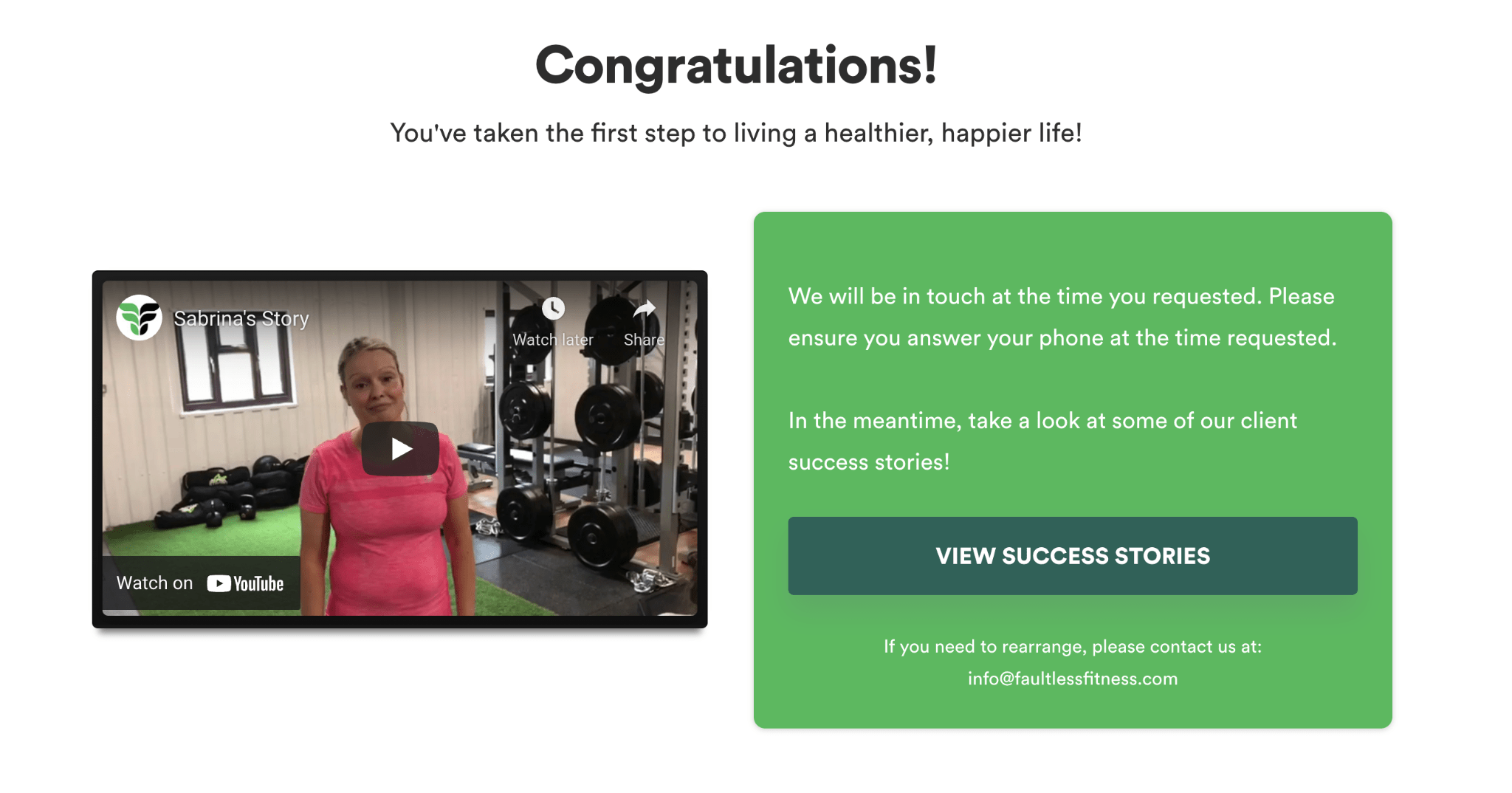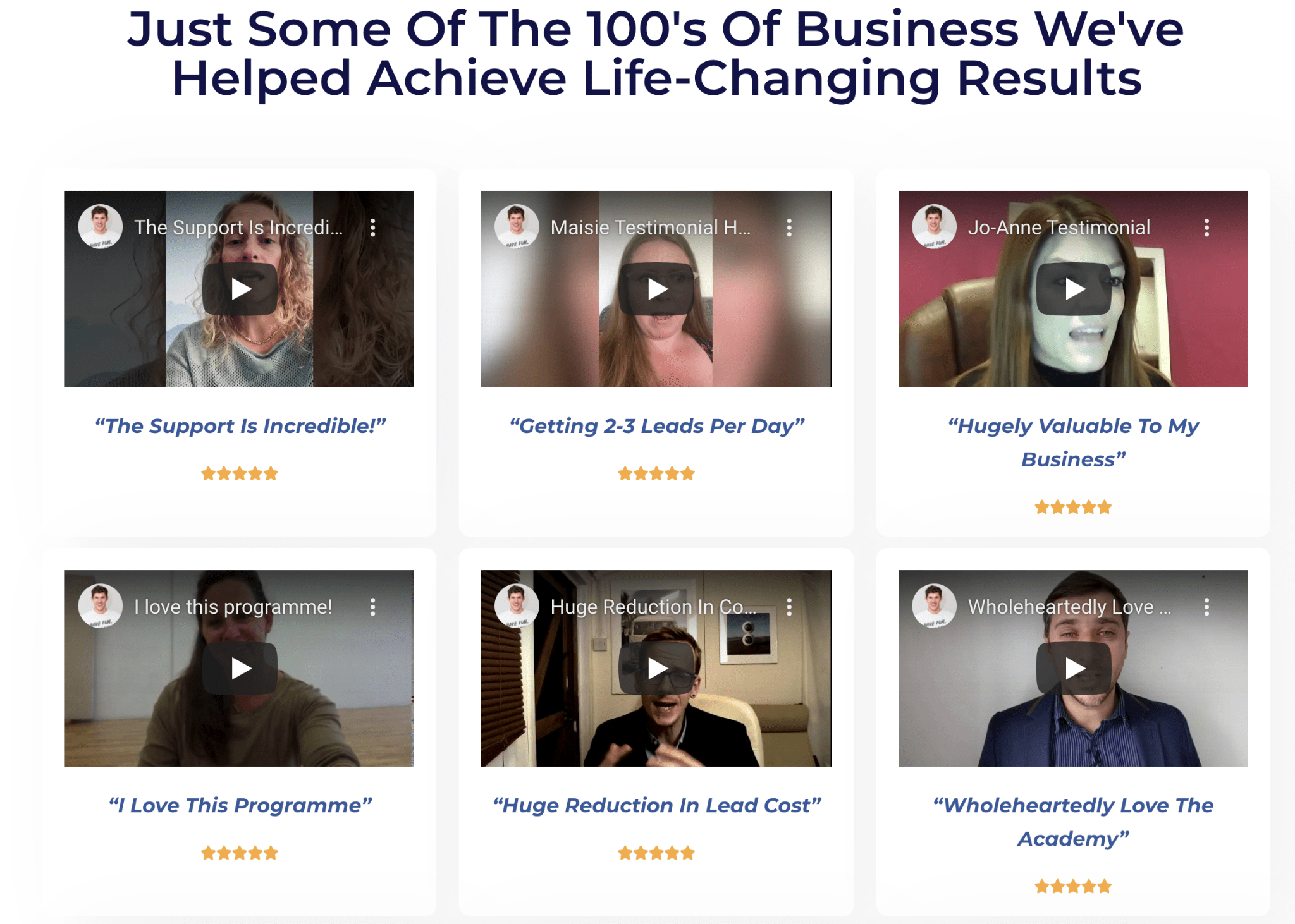You know the drill: You build a quick landing page and start promoting it.
The leads start rolling in, but there’s a problem: None of ’em are turning into paying customers. They’re just sitting there, waiting.
Sounds familiar? You’re not alone. Too many businesses throw quick landing pages together, thinking only about the immediate next step (say, generating leads). They often don’t think about the most important thing: How the landing page impacts sales conversions further down the line.
This often causes a pipeline of unqualified leads that wastes your time, energy, and—worst of all—money. What if there was a way you could improve not just the conversion rate of your landing page, but the overall sales conversion rate as well?
Guess what? There is!
By following the three steps outlined in this post, you’ll build more trust with your prospects before they even reach your sales team, making sure your leads not only convert but also turn into paying customers.
1. Use Your Copy to Pre-Qualify Traffic
Here’s a question almost every marketer asks: “How much should we spend per lead?”
And although this question is well-intentioned, it misses a key point. Cost-per-lead is a very important metric and it’s one you should track carefully, but you shouldn’t seek to always generate the most leads at the lowest cost.
Lead generation is a see-saw. You need to balance both lead quality with lead quantity. There’s really no benefit in generating cheap leads if they’re unqualified. Doing so is just a waste of your sales team’s resources.
And this is where your landing page steps in. You can use it to filter out unqualified leads before they ever enter your sales ecosystem.
You can do this in two ways:
- By using language that subtly speaks to the people you’re targeting, while pushing away those who aren’t part of your target audience.
- By being upfront and clearly stating who you help and who you don’t in a “who is this for” section.

This is a great example from Membership Academy, where they clearly call out who the membership is for and who it isn’t for.
Whichever way you decide to do it, there are typically four things you want to clarify with prospects before they contact you. It makes up the acronym BANT:
- Budget: Does this person have access to the amount of money required to purchase your product/services?
- Authority: Does this person have the decision-making power to approve a financial purchase?
- Need: Is the person viewing this landing page someone who actually wants to achieve the outcome you promise?
- Time: In what timeline are they looking for a solution?
When you’re building your landing page, make sure you address each of these points in your copy to ensure only the right people are making it through to your sales team.
2. Include Imagery of Yourself, Your Team, or Your Office
The more you can do to build trust with a prospective customer before you ever speak to them, the better. This is even more important with service providers where there’s typically more of a 1:1 connection with customers.
Take healthcare, for example. It’s an industry where an enormous amount of trust is required.
Typically you’ll run an ad campaign directing people to a landing page where they can fill out a “complimentary consultation” form. From there, the office will call them to book their in-person consultation.
One of the biggest roadblocks for a funnel such as this is that people will fill out the form but won’t answer their phone when the office calls. After coming across this problem multiple times, it was time to do some research.
It turns out people are nervous. They’re nervous about coming into a health practice without first knowing more about the practice, the team, and the service they signed up for.
They sign up in the heat of the moment, then get the classic “buyer’s remorse.” (Or, y’know, “buyer’s jitters.”)
To remedy this problem, make sure to add photos of yourself, your team, or even your office space to your landing pages. By doing this, the visitor gets to see who they’re dealing with and (in the case of a health practice) where they’ll be visiting.

UK-based gymFaultless Fitness is a perfect example of this. They approached us looking for support with their advertising and landing page conversion rate. They told us their target audience wasn’t necessarily “gym-goers” and that they wanted to cater to a wider demographic (i.e., people that hadn’t ever stepped into a gym before).
With this in mind, we wanted to include pictures of the gym, personal trainers, and other members working out on the landing page. This way, people could see that the gym wasn’t a scary place and that it was a fun, sociable environment.
By simply adding pictures like this, we saw the landing page conversion rate increase from 4% to 11%—a 275% conversion rate boost!
Tip: Do you know the average conversion rate for your industry? You can find out in the 2021 Conversion Benchmark Report.
3. Link to an Informative Confirmation Page
The confirmation page (the page someone lands on after the landing page) is the most underutilized piece of real estate on the internet.
Once someone has signed up for the offer on your landing page, they should be redirected to a confirmation page that does two things:
- Confirms the action they’ve just taken.
- Introduces the next step.
You’d be surprised at how many people sign up for things without realizing what they’ve done. The confirmation page is the perfect place to reinforce the action they’ve just taken, making clear that they’ve signed up for your offer.
You can also use the page to reiterate the benefits of having filled out your form. By doing this, they’re much more likely to actually pay attention to the thing they’ve signed up for.
Once you’ve confirmed the transaction, it leads you perfectly into introducing the next step.
When someone has signed up for your offer, they’re in a state of intent. They’re actively trying to solve a problem—and if you don’t give them the opportunity to take the next step, you’re missing out on an opportunity.

Here’s another example from Faultless Fitness. The confirmation page offers success stories—so people have a chance to see what success might look like before they even get on the phone.
Your next step might be to upsell them something, or it can even be as simple as “selling” the next step. If the next step is for your sales team to reach out, tell your customers on the confirmation page! Set up their expectations and you’ll increase the chance that they’ll show up.
Bonus: Show Specific Social Proof
I know, I know—I said there would be three tips. But you’ve read this far, so have another! 😉
Here’s the thing: Nobody likes to be a guinea pig. When people visit your landing page, they’re there because they’re intrigued by your offer. They believe you may help them solve a specific problem.
The goal of the landing page is to tell people how and why you’re the right person or business to help them. One of the best ways to do this is by providing specific social proof showing you’re trusted by people like them that you’ve helped before.

Videos work particularly well because they feel real. (However, be sure any videos are serving a key purpose on your landing pages, as they’ve been shown to have either a neutral or negative impact on conversions.)
There are many ways you can add social proof to your landing pages, such as showing trust logos, social media support, reviews, ratings, testimonials, or case studies.
If you can show social proof that is specific to the offer you’re making, that goes a long way. For example, if you’re a dentist and you’re trying to get people to sign up for your teeth whitening offer, share the stories of people who have used that service with you.
Always Think Two Steps Ahead to Turn Those Conversions Into Sales
Remember: When you create a landing page, don’t just think about the immediate next step—think about how the landing page can help you with the entire sales process.
Your landing page is the first real impression people get of your brand. And as we all know: You only get one chance to make a first impression. So make it count!
A great way to do this is by using Smart Traffic. It allows you to automatically serve your prospects with the landing page that’s most likely to convert ’em based on their unique attributes. This means you could try different variants of a landing page using the tips above, then turn on Smart Traffic and see which ones perform best.

![[Optimize – MOFU] AI Optimization Product Page – V3 – 2024](https://unbounce.com/photos/smart-traffic-blog-visual-cta.jpg)
